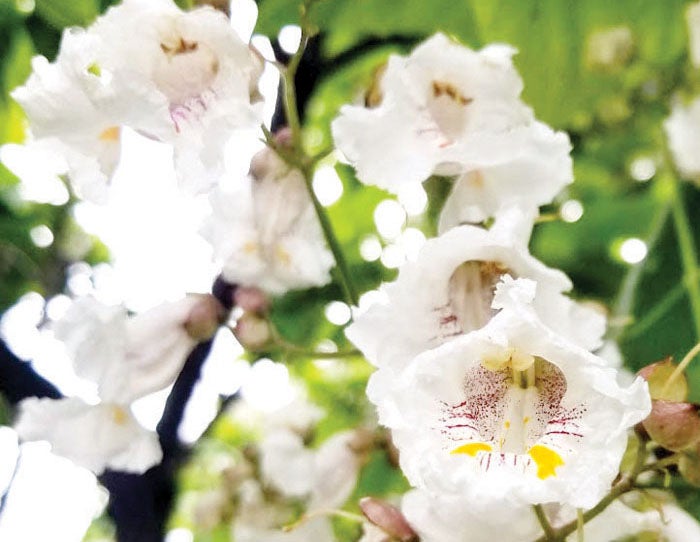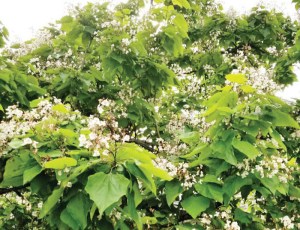Darrell Blackwelder: The catalpa is an unusual tree
Published 12:00 am Sunday, June 7, 2020
There is a very unusual tree blooming along North Main Street in Salisbury. It has very long cascading blooms with very large leaves. This rather unique tree is a catalpa (Catalpa bignonioides). It is also referred to as cigar tree or fishing worm tree. The tree is native to Louisiana, Alabama and Georgia but will grow most anywhere in the United States including some parts of Canada. It prefers rich, moderately well-drained soils but will tolerate both wet and dry soil conditions. Catalpas like most trees grow best with full sunlight.
Catalpa is one of those trees you will not find at your local garden center. It many realms, its often noted as a trash tree — more of a hindrance. However it has gained notoriety with its unique leaf and floral structure with numerous awards from England’s Royal Horticultural Society. At maturity, the catalpa is a moderate size tree with an unusual shape that does not blend well in traditional landscape settings. It is now in full bloom bearing white flowers an inch and a half in width. After flowering the tree forms long slender seed pods up to 12 inches long that droop like strings from the branches.
Sphinx moth caterpillars often feed on the leaves and may cause significant damage, but will not kill the tree. Fishermen often use the caterpillars as fish bait as the name suggests,” fish bait tree.” Go to https://plants.ces.ncsu.edu/plants/catalpa-bignonioides/ for more detailed information about the catalpa.
Darrell Blackwelder deblackw@ncsu.edu is the retired horticulture agent and director with the North Carolina Cooperative Extension Service in Rowan County.





